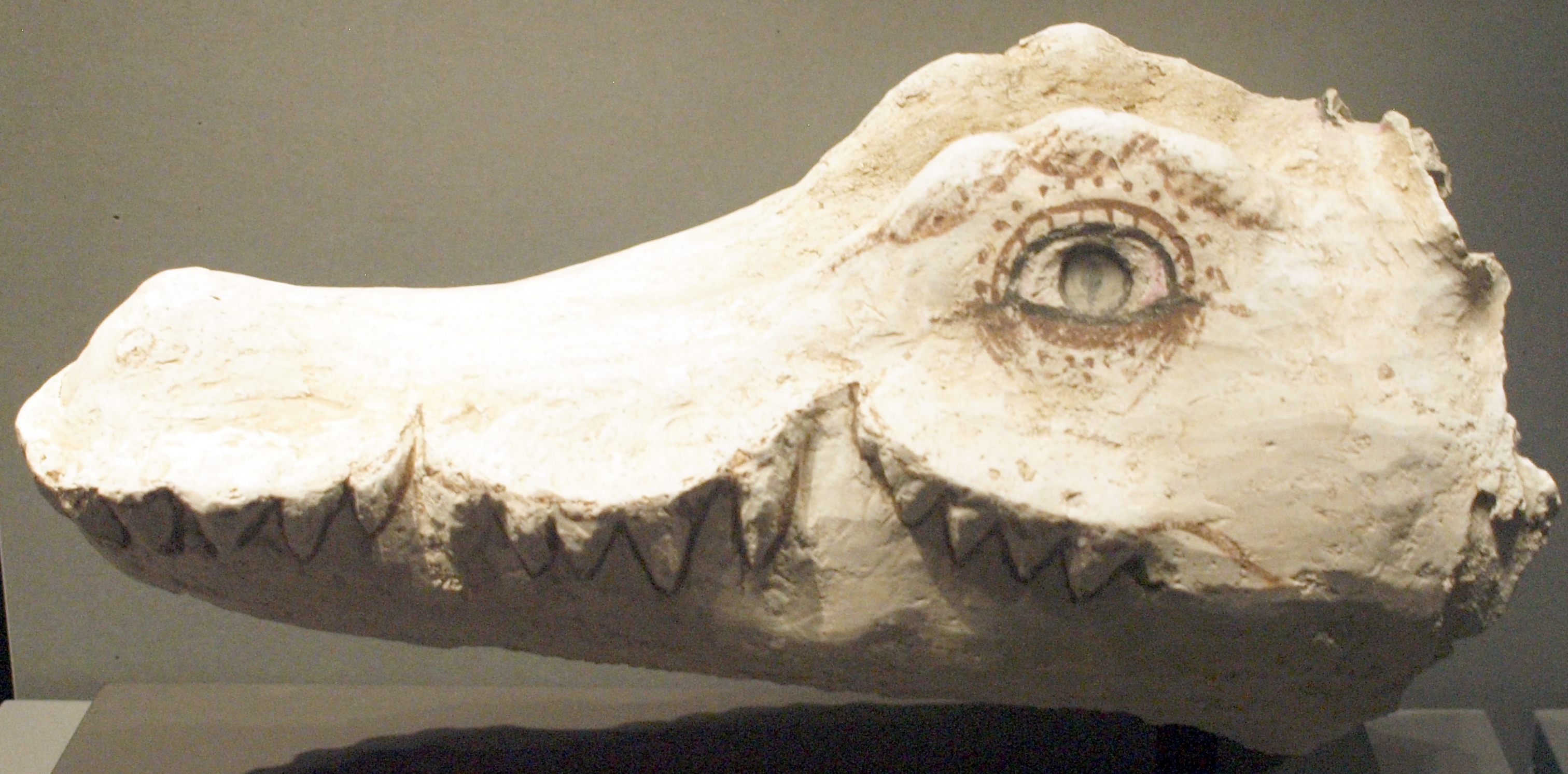FOUND: Empty Animal Mummies

A crocodile mummy mask at the State Museum of Egyptian Art in Munich (Photo: captmondo/Wikimedia)
In addition to mummifying humans, the ancient Egyptians mummified millions of animals—ibises, cats, crocodiles—as offerings to gods.
“You would go to a special site, buy an animal mummy, using a system of barter. You’d then give it to a priest, who would collect a group of animal mummies and bury them,” Egyptologist Lidija McKnight explained to the BBC.
But when McKnight and her colleagues at the University of Manchester recently scanned about 800 of these animal mummies, using CT scans and X-rays, they found something surprising: only a third had full skeletons inside. Some had partial remains, but many—about a third of all the mummies examined—contained only sticks, muds, and some animal-related products, like feathers or eggshells.
McKnight’s theory is that mummy-makers just couldn’t breed and then preserve enough animals to keep up with demand—and these small amounts of animal materials were enough to appease the gods to which they were offered. To speculate for a second, maybe the mummy-makers were just acting like good entrepreneurs and making different products for different price-points. After all, it’s not everyone who can afford a fully mummified crocodile, with actual crocodile heads inside.

Not all animal mummies are empty. (Photo: University of Manchester, Manchester Museum)
Every morning, we highlight one newly found object, curiosity or wonder. Discover something unusual or amazing? Tell us about it! Send your finds to [email protected]







Follow us on Twitter to get the latest on the world's hidden wonders.
Like us on Facebook to get the latest on the world's hidden wonders.
Follow us on Twitter Like us on Facebook